Can Carbon Offset Policies Be Effectively Implemented in All Regions of China? An Evolutionary Game Analysis of Decision-Making Dynamics of Local Governments
Abstract
:1. Introduction
2. Literature Review
3. Evolutionary Game Analysis of Carbon Offset Policies
3.1. Methodology
3.2. Game Model Construction for Carbon Offset Policies
3.3. Game Model Analysis of Carbon Offset Policy
3.4. Game Analysis of Carbon Offset with the Introduction of Incentive and Restraint Mechanisms
- The incentive and restraint mechanism for carbon surplus local governments: When a carbon surplus local government conducts ecological conservation, the central government gives a reward ; otherwise, a penalty is given. This study terms this Incentive and Restraint Mechanism 1.
- The incentive and restraint mechanism for carbon deficit surplus local governments: When carbon deficit local governments compensate carbon surplus local governments, the central government gives a reward ; otherwise, a penalty is given. This study terms this as Incentive and Restraint Mechanism 2.
- The incentive and restraint mechanism for carbon surplus and carbon deficit local governments: This is when carbon surplus local governments conduct ecological conservation, carbon deficit local governments compensate them, the central government gives both sides a reward but imposes a penalty F if one of the two governments does not fulfill its corresponding obligations, and the size of penalty given to both sides is . This study terms this Incentive and Restraint Mechanism 3.
3.4.1. Game Analysis of Carbon Offsetting under Incentive and Restraint Mechanism 1
3.4.2. Game Analysis of Carbon Offsetting under Incentive and Restraint Mechanism 2
3.4.3. Game Analysis of Carbon Offsetting under Incentive and Restraint Mechanism 3
- (1)
- .
- (2)
- .
4. Discussion
4.1. Effectiveness of Different Incentives and Restraints Mechanisms
4.2. Effect of Different Incentive and Restraint Parameters on the Speed of Convergence of the Evolutionary Game
5. Conclusions and Policy Implications
5.1. Implications for Research
5.2. Policy Implications
6. Limitations and Further Research
Author Contributions
Funding
Institutional Review Board Statement
Informed Consent Statement
Data Availability Statement
Conflicts of Interest
References
- Sonter, L.J.; Simmonds, J.S.; Watson, J.E.M.; Jones, J.P.G.; Kiesecker, J.M.; Costa, H.M.; Bennun, L.; Edwards, S.; Grantham, H.S.; Griffiths, V.F.; et al. Local conditions and policy design determine whether ecological compensation can achieve No Net Loss goals. Nat. Commun. 2020, 11, 2072. [Google Scholar] [CrossRef] [PubMed]
- Song, M.; Zhao, X.; Shang, Y. The impact of low-carbon city construction on ecological efficiency: Empirical evidence from quasi-natural experiments. Resour. Conserv. Recycl. 2020, 157, 104777. [Google Scholar] [CrossRef]
- Sun, R.; Liu, T.; Chen, X.; Yao, L. A biomass-coal co-firing based bi-level optimal approach for carbon emission reduction in China. J. Clean. Prod. 2021, 278, 123318. [Google Scholar] [CrossRef]
- Wang, W.; Wang, W.; Xie, P.; Zhao, D. Spatial and temporal disparities of carbon emissions and interregional carbon compensation in major function-oriented zones: A case study of Guangdong province. J. Clean. Prod. 2020, 245, 118873. [Google Scholar] [CrossRef]
- Zhai, T.; Wang, J.; Fang, Y.; Huang, L.; Liu, J.; Zhao, C. Integrating Ecosystem Services Supply, Demand and Flow in Ecological Compensation: A Case Study of Carbon Sequestration Services. Sustainability 2021, 13, 1668. [Google Scholar] [CrossRef]
- Yang, Y.; Yang, S. Are industrial carbon emissions allocations in developing regions equitable? A case study of the northwestern provinces in China. J. Environ. Manag. 2020, 265, 110518. [Google Scholar] [CrossRef]
- Yan, F.; Wang, Y.; Du, Z.; Chen, Y.; Chen, Y. Quantification of ecological compensation in Beijing-Tianjin-Hebei based on carbon footprint calculated using emission factor method proposed by IPCC. Trans. Chin. Soc. Agric. Eng. 2018, 34, 15–20. [Google Scholar] [CrossRef]
- Yu, B.; Xu, L.; Yang, Z. Ecological compensation for inundated habitats in hydropower developments based on carbon stock balance. J. Clean. Prod. 2016, 114, 334–342. [Google Scholar] [CrossRef]
- Miao, Y.; Kong, C.; Wang, L.; Mu, J.; Lu, X.; Bao, J.; Li, H. A provincial lateral carbon emissions compensation plan in China based on carbon budget perspective. Sci. Total Environ. 2019, 692, 1086–1096. [Google Scholar] [CrossRef]
- Yue, D.; Sarkar, A.; Cui, Y.; Qian, L.; Minjuan, Z.; Das, J.C. Ecological compensation of grain trade within urban, rural areas and provinces in China: A prospect of a carbon transfer mechanism. Environ. Dev. Sustain. 2021, 23, 16688–16712. [Google Scholar] [CrossRef]
- Hu, D.; Liu, H.; Chen, X.; Chen, Y. Research on the ecological compensation standard of the basin pollution control project based on evolutionary game theory and by taking Xiangjiang River as a case. Front. Eng. Manag. 2019, 6, 575–583. [Google Scholar] [CrossRef]
- Gao, X.; Shen, J.; He, W.; Sun, F.; Zhang, Z.; Guo, W.; Zhang, X.; Kong, Y. An evolutionary game analysis of governments’ decision-making behaviors and factors influencing watershed ecological compensation in China. J. Environ. Manag. 2019, 251, 109592. [Google Scholar] [CrossRef] [PubMed]
- Wei, C.; Luo, C. A differential game design of watershed pollution management under ecological compensation criterion. J. Clean. Prod. 2020, 274, 122320. [Google Scholar] [CrossRef]
- Sun, H.; Gao, G.; Li, Z. Research on the cooperative mechanism of government and enterprise for basin ecological compensation based on differential game. PLoS ONE 2021, 16, e0254411. [Google Scholar] [CrossRef] [PubMed]
- Yi, Y.; Wei, Z.; Fu, C. A differential game of transboundary pollution control and ecological compensation in a river basin. Complexity 2020, 2020, 6750805. [Google Scholar] [CrossRef]
- Li, F.; Pan, B.; Wu, Y.; Shan, L. Application of game model for stakeholder management in construction of ecological corridors: A case study on Yangtze River Basin in China. Habitat Int. 2017, 63, 113–121. [Google Scholar] [CrossRef]
- Wang, Z.; Yang, T.; Liu, H.; Yuan, M.; Li, C. Evaluation and Dynamic Mechanism of Ecological Space in a Densely Urbanized Region During a Rapidly Growing Period—A Case Study of the Wu-E-Huang-Huang Metropolitan Interlocking Region. Sustainability 2019, 12, 73. [Google Scholar] [CrossRef] [Green Version]
- Andrés-Domenech, P.; Martín-Herrán, G.; Zaccour, G. Cooperation for sustainable forest management: An empirical differential game approach. Ecol. Econ. 2015, 117, 118–128. [Google Scholar] [CrossRef]
- Guo, J.Y.; Chen, S.L. Evolutionary game analysis of ecological compensation in the economic transition of state-owned forest areas. Appl. Ecol. Environ. Res. 2019, 17, 14425–14434. [Google Scholar] [CrossRef]
- Tan, L.; Zhang, Q.; Zhang, Y. Modelling a Compensation Standard for a Regional Forest Ecosystem: A Case Study in Yanqing District, Beijing, China. Int. J. Environ. Res. Public Health 2018, 15, 565. [Google Scholar] [CrossRef] [Green Version]
- Franklin, O.; Nasholm, T.; Hogberg, P.; Hogberg, M.N. Forests Trapped in Nitrogen Limitation—An Ecological Market Perspective on Ectomycorrhizal Symbiosis. New Phytologist. 2014, 203, 657–666. [Google Scholar] [CrossRef] [PubMed]
- Zhao, J. Research on improving ecological compensation mechanism of mineral resources development. In Proceedings of the International Conference on E-Health Networking Digital Ecosystems and Technologies (EDT), Shenzhen, China, 17–18 April 2010; IEEE: Manhattan, NY, USA, 2010; pp. 567–570. [Google Scholar] [CrossRef]
- Song, C.; Zhang, Z.; Ge, J. Evolution of Environmental Policy for China’s Rare Earths: Comparing Central and Local Government Policies. Resour. Policy 2020, 68, 101786. [Google Scholar] [CrossRef]
- Ding, S.; Wang, M.; Zhang, H. Intergenerational Externalities Influence for Exploitation Process of Rare Metal Minerals. Process. 2021, 9, 883. [Google Scholar] [CrossRef]
- Yan, G.; Xue, F.; Li, Z. Research on Ecological Restoration Mechanism of Rare-Earth Mines Based on Evolutionary Game. Adv. Mater. Sci. Eng. 2020, 2020, 4201945. [Google Scholar] [CrossRef] [Green Version]
- Yeoh, E.K.K.; Suruna. Environmental Dimension of Regional Development in China, with Special Focus on Grassland Ecological Compensation in Alxa League of Inner Mongolia. Contemp. Chin. Political Econ. Strateg. Relat. 2019, 5, 409–489. Available online: https://www.proquest.com/docview/2264113913/fulltextPDF/3CA7CE5134064E2BPQ/1?accountid=13863 (accessed on 23 December 2021).
- Xue, C.; Shao, C.; Gao, J. Ecological Compensation Strategy for SDG-Based Basin-Type National Parks: A Case Study of the Baoxing Giant Panda National Park. Int. J. Environ. Res. Public Health 2020, 17, 3908. [Google Scholar] [CrossRef] [PubMed]
- Zhang, Y.; Li, Y. Willingness to Pay for Tourism Ecological Compensation and Its Influencing Factors--Taking the Best Spring in the World in Ji’nan as an Example. Iop Conf. Series. Earth Environ. Sci. 2020, 615, 12046. [Google Scholar] [CrossRef]
- Koelble, T.A. Ecology, economy and empowerment: Eco-tourism and the game lodge industry in South Africa. Bus. Politics 2011, 13, 1–24. [Google Scholar] [CrossRef]
- Gssling, S.; Broderick, J.; Upham, P.; Ceron, J.P.; Dubois, G.; Peeters, P.; Strasdas, W. Voluntary Carbon Offsetting Schemes for Aviation: Efficiency, Credibility and Sustainable Tourism. J. Sustain. Tour. 2007, 15, 223–248. [Google Scholar] [CrossRef]
- Nkuiya, B. Transboundary pollution game with potential shift in damages. J. Environ. Econ. Manag. 2015, 72, 1–14. [Google Scholar] [CrossRef]
- Dockner, E.J.; Van Long, N. International pollution control: Cooperative versus noncooperative strategies. J. Environ. Econ. Manag. 1993, 25, 13–29. [Google Scholar] [CrossRef] [Green Version]
- Nkuiya, B.; Plantinga, A.J. Strategic pollution control under free trade. Resour. Energy Econ. 2021, 64, 101218. [Google Scholar] [CrossRef]
- Nkuiya, B.; Marrouch, W.; Bahel, E. International Environmental Agreements under Endogenous Uncertainty. J. Public Econ. Theory 2015, 17, 752–772. [Google Scholar] [CrossRef] [Green Version]
- Haya, B.; Cullenward, D.; Strong, A.L.; Grubert, E.; Heilmayr, R.; Sivas, D.A.; Wara, M. Managing uncertainty in carbon offsets: Insights from California’s standardized approach. Clim. Policy 2020, 20, 1112–1126. [Google Scholar] [CrossRef]
- Greene, S.; Façanha, C. Carbon offsets for freight transport decarbonization. Nat. Sustain. 2019, 2, 994–996. [Google Scholar] [CrossRef]
- Köhl, M.; Ehrhart, H.-P.; Knauf, M.; Neupane, P.R. A viable indicator approach for assessing sustainable forest management in terms of carbon emissions and removals. Ecol. Indic. 2020, 111, 106057. [Google Scholar] [CrossRef]
- Calel, R.; Colmer, J.; Dechezleprêtre, A.; Glachant, M. Do carbon offsets offset carbon? Cesifo Work. Pap. 2021, 9368, 1–46. [Google Scholar] [CrossRef]
- McAfee, K. Shall the American Association of Geographers Endorse Carbon Offsets? Absolutely Not! Prof. Geogr. 2022, 74, 171–177. [Google Scholar] [CrossRef]
- Batrancea, L.; Rathnaswamy, M.M.; Batrancea, I.; Nichita, A.; Rus, M.-I.; Tulai, H.; Fatacean, G.; Masca, E.S.; Morar, I.D. Adjusted Net Savings of CEE and Baltic Nations in the Context of Sustainable Economic Growth: A Panel Data Analysis. J. Risk Financ. Manag. 2020, 13, 234. [Google Scholar] [CrossRef]
- Batrancea, I.; Rathnaswamy, M.K.; Batrancea, L.; Nichita, A.; Gaban, L.; Fatacean, G.; Tulai, H.; Bircea, I.; Rus, M.-I. A Panel Data Analysis on Sustainable Economic Growth in India, Brazil, and Romania. J. Risk Financ. Manag. 2020, 13, 170. [Google Scholar] [CrossRef]
- Smith, J.M.; Price, G.R. The Logic of Animal Conflict. Nature 1973, 246, 15–18. [Google Scholar] [CrossRef]
- Xiao, Y.; Peng, Q.; Xu, W.; Xiao, H. Production-Use Water Pricing and Corporate Water Use in China: An Evolutionary Game Theory Model. Math. Probl. Eng. 2021, 2021, 6622064. [Google Scholar] [CrossRef]
- Peng, Q.; Xiao, Y. Will Third-Party Treatment Effectively Solve Issues Related to Industrial Pollution in China? Sustainability 2020, 12, 7685. [Google Scholar] [CrossRef]
- Guang, Z.; Pan, G.; Zhang, W. Evolutionary Game Theoretic Analysis of Low Carbon Investment in Supply Chains Under Governmental Subsidies. Int. J. Environ. Res. Public Health 2018, 15, 2465. [Google Scholar] [CrossRef] [Green Version]
- Qiu, Y.; Liu, Y.; Liu, Y.; Chen, Y.; Li, Y. An Interval Two-Stage Stochastic Programming Model for Flood Resources Allocation under Ecological Benefits as a Constraint Combined with Ecological Compensation Concept. Int. J. Environ. Res. Public Health 2019, 16, 1033. [Google Scholar] [CrossRef] [PubMed] [Green Version]
- Galatowitsch, S.M. Carbon Offsets as Ecological Restorations. Restor. Ecol. 2009, 17, 563–570. [Google Scholar] [CrossRef]
- Lu, J.-L.; Shon, Z.Y. Exploring airline passengers’ willingness to pay for carbon offsets. Transp. Res. Part D Transp. Environ. 2012, 17, 124–128. [Google Scholar] [CrossRef]
- Van Kooten, G.C.; Johnston, C.M.T. The economics of forest carbon offsets. Annu. Rev. Resour. Econ. 2016, 8, 227–246. [Google Scholar] [CrossRef]
- Sharma, G.D.; Tiwari, A.K.; Erkut, B.; Mundi, H.S. Exploring the nexus between non-renewable and renewable energy consumptions and economic development: Evidence from panel estimations. Renew. Sustain. Energy Rev. 2021, 146, 111152. [Google Scholar] [CrossRef]
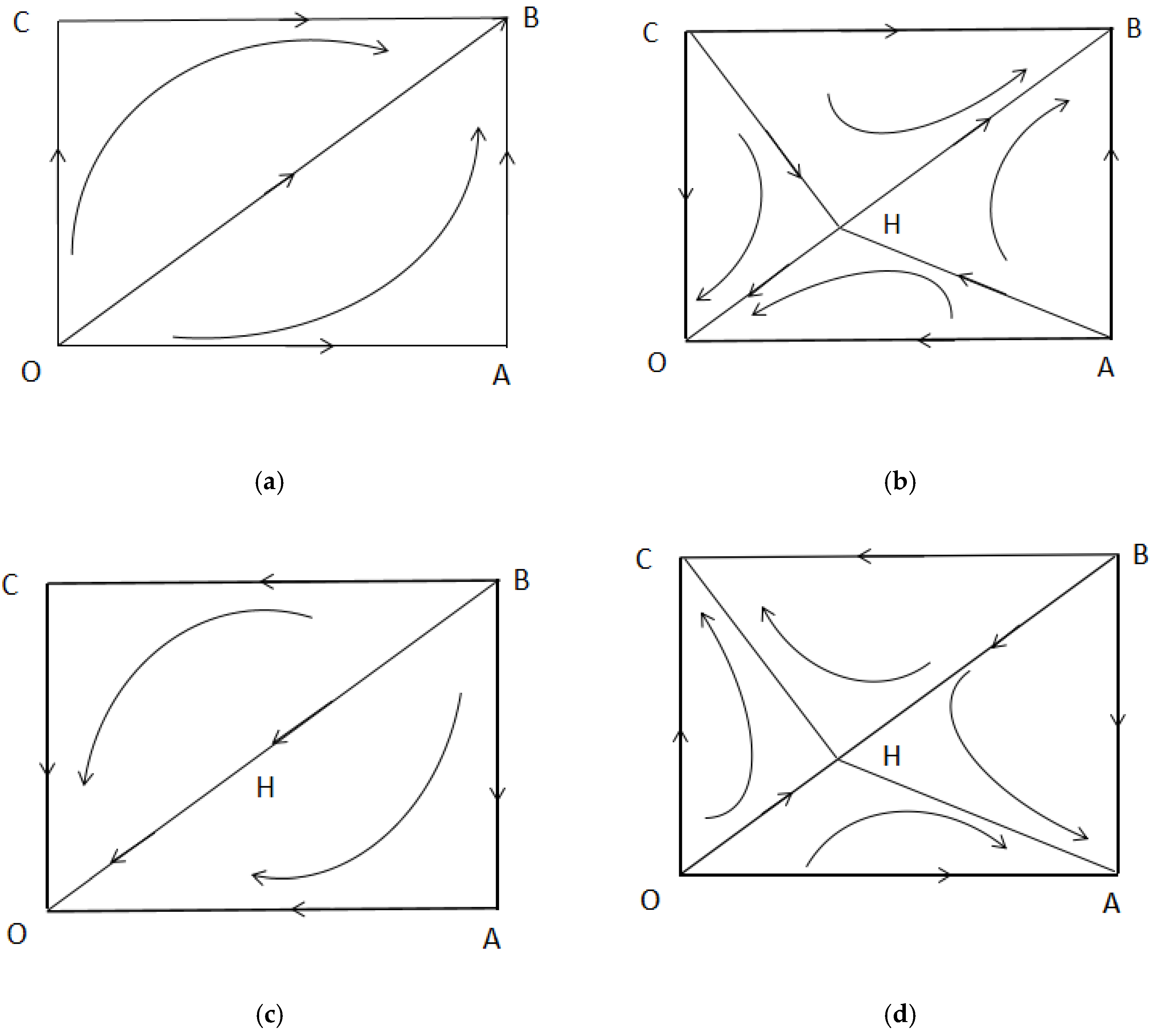
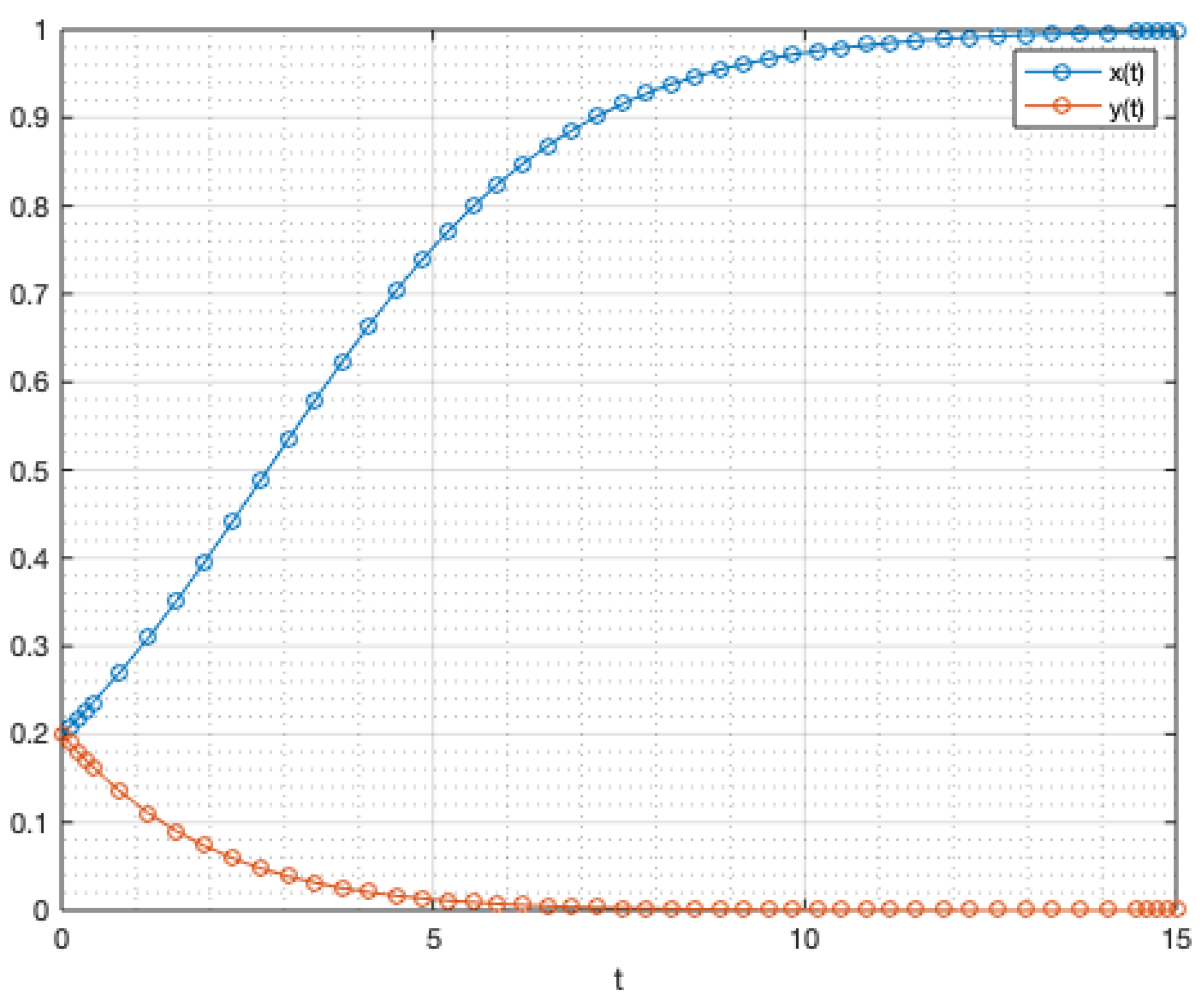
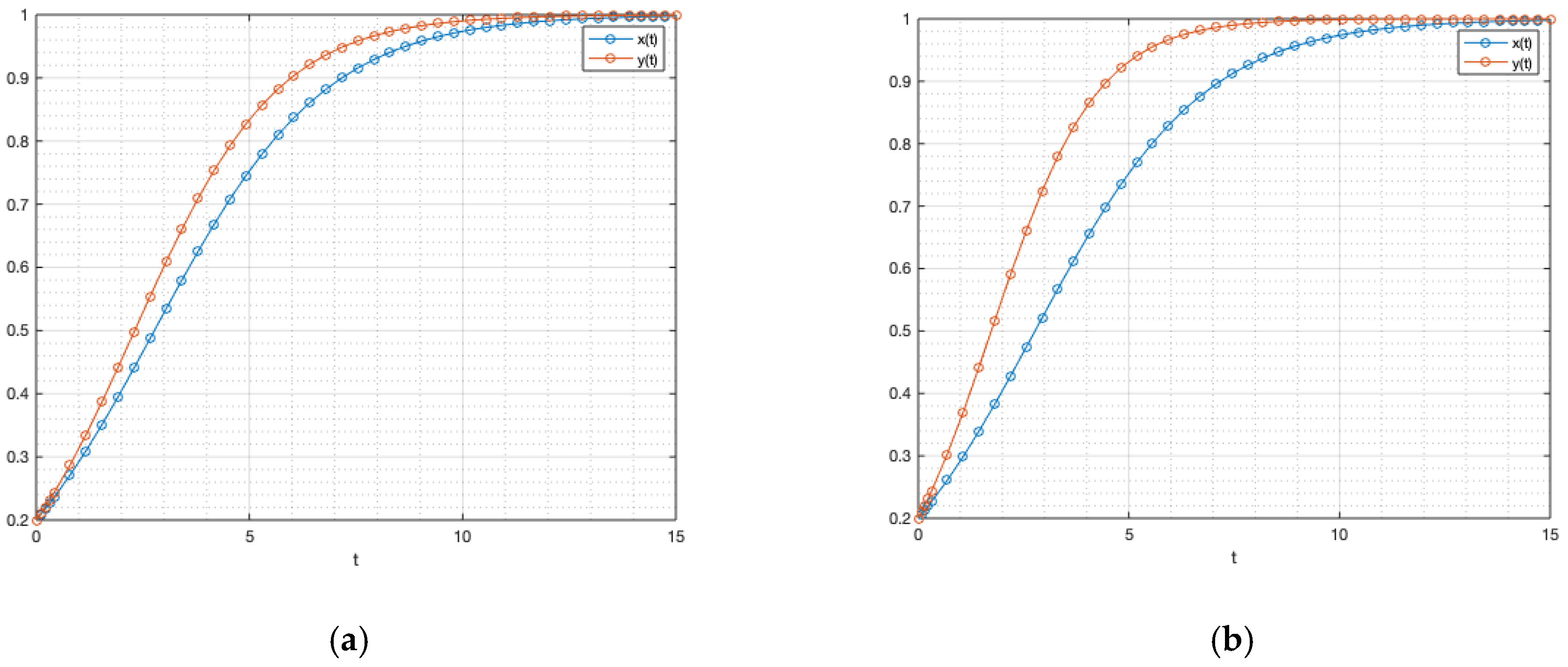
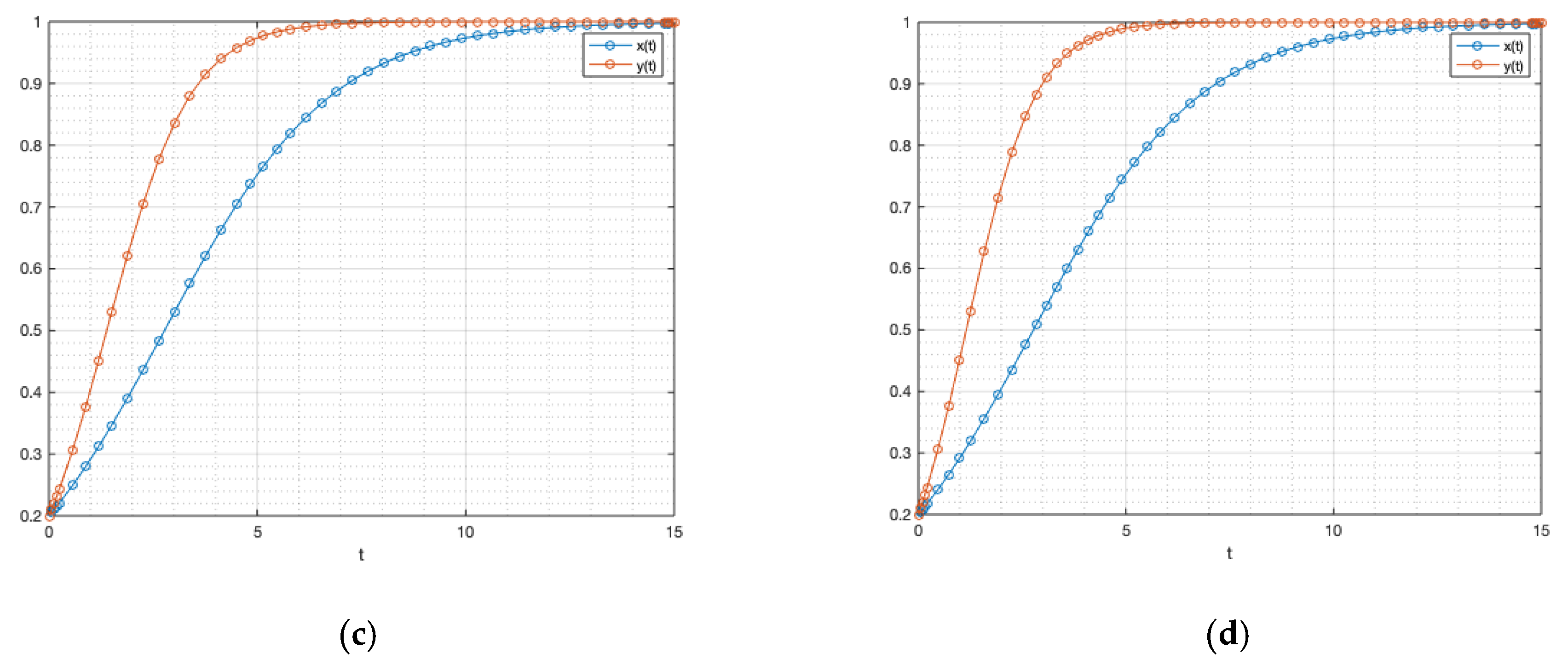
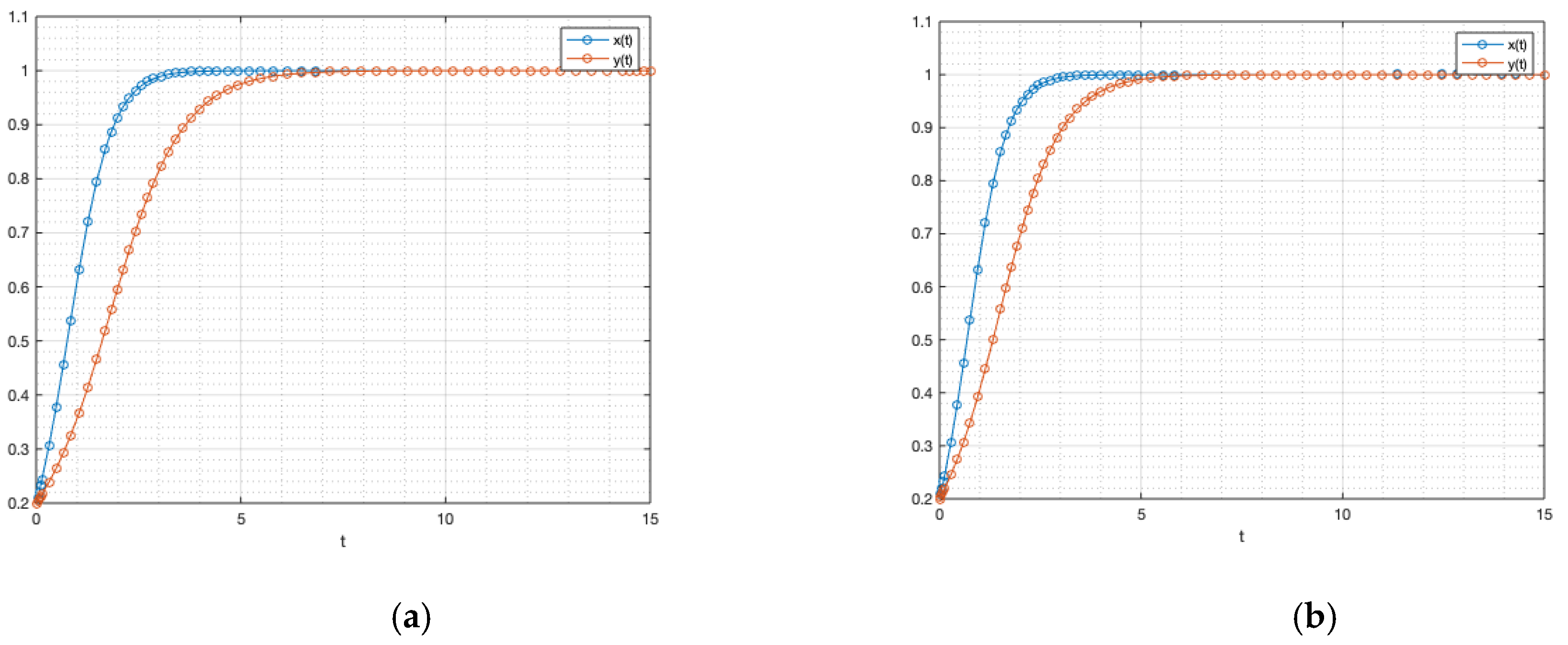

| Player | Parameter | Description |
|---|---|---|
| Carbon Surplus Local Government | Carbon surplus local governments adopt “protection” strategies to gain revenue | |
| Carbon Surplus Local Government | Carbon surplus local governments adopt “protection” strategies to pay the cost | |
| Carbon Surplus Local Government and Carbon Deficit Local Government | Carbon surplus local governments adopt “conservation” strategies to benefit carbon deficit areas | |
| Carbon Surplus Local Government and Carbon Deficit Local Government | Carbon deficit local governments pay carbon compensation costs to carbon surplus local governments | |
| Carbon Surplus Local Government | The proportion of carbon surplus local governments adopting “protection” strategy | |
| Carbon Deficit Local Government | The proportion of carbon deficit local governments adopting “protection” strategy |
| Carbon Deficit Local Government | |||
|---|---|---|---|
| Compensation | No Compensation | ||
| Carbon Surplus Local Government | Conservation | ||
| No conservation | |||
| Carbon Deficit Local Government | |||
|---|---|---|---|
| Compensation | No Compensation | ||
| Carbon Surplus Local Government | Conservation | ||
| No conservation | |||
| Carbon Deficit Local Government | |||
|---|---|---|---|
| Compensation | No Compensation | ||
| Carbon Surplus Local Government | Conservation | ||
| No conservation | |||
| Carbon Deficit Local Government | |||
|---|---|---|---|
| Compensation | No Compensation | ||
| Carbon Surplus Local Government | Conservation | ||
| No conservation | |||
| Equilibrium Point | ||||
|---|---|---|---|---|
| (0, 0) | 0 | 0 | ||
| (0, 1) | 0 | 0 | ||
| (1, 0) | 0 | 0 | ||
| (1, 1) | 0 | 0 | ||
| 0 | 0 |
Publisher’s Note: MDPI stays neutral with regard to jurisdictional claims in published maps and institutional affiliations. |
© 2022 by the authors. Licensee MDPI, Basel, Switzerland. This article is an open access article distributed under the terms and conditions of the Creative Commons Attribution (CC BY) license (https://creativecommons.org/licenses/by/4.0/).
Share and Cite
Peng, Q.; Xu, W.; Xiao, Y. Can Carbon Offset Policies Be Effectively Implemented in All Regions of China? An Evolutionary Game Analysis of Decision-Making Dynamics of Local Governments. Sustainability 2022, 14, 1591. https://doi.org/10.3390/su14031591
Peng Q, Xu W, Xiao Y. Can Carbon Offset Policies Be Effectively Implemented in All Regions of China? An Evolutionary Game Analysis of Decision-Making Dynamics of Local Governments. Sustainability. 2022; 14(3):1591. https://doi.org/10.3390/su14031591
Chicago/Turabian StylePeng, Qiao, Wanting Xu, and Yao Xiao. 2022. "Can Carbon Offset Policies Be Effectively Implemented in All Regions of China? An Evolutionary Game Analysis of Decision-Making Dynamics of Local Governments" Sustainability 14, no. 3: 1591. https://doi.org/10.3390/su14031591
APA StylePeng, Q., Xu, W., & Xiao, Y. (2022). Can Carbon Offset Policies Be Effectively Implemented in All Regions of China? An Evolutionary Game Analysis of Decision-Making Dynamics of Local Governments. Sustainability, 14(3), 1591. https://doi.org/10.3390/su14031591






